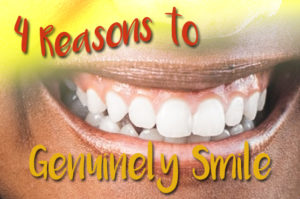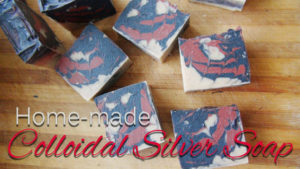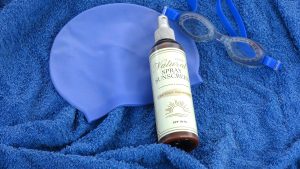It’s been about a year since I found crucial information regarding mouth care for my family and me. This could be one of the most important things to know if you want to avoid the pain and stress associated with tooth decay and the subsequent dental visits and possible surgeries needed due to poor mouth health. For people with tooth decay, xylitol could aid in reversing dental caries and improve mouth and gum health.
Who in the world would have thought that ‘sugar’ could protect and improve your mouth health?!
Although Xylitol for mouth health has been known since the 70s, I had only recently discovered its benefits through Ellie Phillips DDS, who wrote the books Mouth Care Comes Clean and Kiss Your Dentist Goodbye. I highly recommend you read her books as she explains the reasons behind gum disease and gives natural solutions to control your mouth health.
Xylitol is my number one arsenal in oral care, especially when protecting your children’s teeth from sugars, cakes, soft drinks, and other acidic and sugary foods that could cause tooth decay. I just HAD to share this information with you all.
Xylitol and its uses
Xylitol was known as far back as 2500 in a book of Chinese herbal cures for oral health. Medical professionals use xylitol to balance blood glucose during surgeries. It was first discovered in 1890 by a German chemist Emil Fischer, who isolated xylitol from the naturally occurring sugar alcohol from birch trees. 12
With the popularity of artificial sweeteners, and less expensive products xylitol was almost forgotten but re-discovered during World War II when table sugar was scarce in Europe. 13
There have been many studies and investigations regarding the use of Xylitol for health care, beginning in the 1970s.
Xylitol is permitted to be used in foods and in fact, it is used by confectionary manufacturers. It is also used by pharma and oral hygiene industries today.
Xylitol is a sugar alcohol, similar to sorbitol, lactitol, mannitol, erythritol, and maltitol. It is considered a ‘sugar alcohol’ (also called polyol) because it has a chemical structure that’s similar to both sugars and alcohol, but is, in fact, a type of low-digestible carbohydrate that includes fiber. 1 They are also called ‘sweet carbohydrates’ for this reason. Despite the name ‘sugar alcohol’ however, they don’t contain ethanol.10
Xylitol is just as sweet and looks like refined cane sugar in its powdered form. It also has a similar chemical structure to sugar (sucrose) but with 40% fewer calories.11 This is good for weight loss purposes. It is naturally found in small quantities in some fruits and vegetables like; plums, strawberries, cauliflower, and pumpkin but most manufactured xylitol is usually produced in a lab from ‘xylose’. Xylose is naturally obtained from the bark of the birch tree and also from certain fruits. In small amounts, Xylitol is stated to be safe but large doses reaching 50g a day will most likely cause side effects. 7
Even though you can bake with Xylitol, I’m not too keen to try it. Firstly, Xylitol inactivates yeast because it is an anti-fungal, so it’s not ideal for baked goods that are leavened. Secondly, it’s difficult to gauge how much Xylitol you have consumed. You don’t want to accidentally take too much of it because of the gastro-intestinal issues that may arise. Yes, this has happened to me, and it can be a very unpleasant experience.
With Xylitol, remember the golden rule: a little bit a day goes a long way.
I have used it in warm drinks, and it sweetens it nicely and that’s good enough for me, at least in this way, you can measure by the teaspoon and not accidentally go over the daily limit. Be aware that 20g maximum per day is the suggested intake for an adult, any more than this and it is most likely to cause intestinal discomfort like bloating and diarrhea. This is the reason why I don’t use it often in cooking or beverages. It is easy to go past this amount, and you don’t want intestinal discomfort, especially when you are out and about. You don’t want to run to the toilet because you accidentally ate too many homemade biscuits that were sweetened with Xylitol. Yeesh!
I believe the best way to use Xylitol is by consuming homemade mints after meals throughout the day.
Also be aware that Xylitol is especially toxic for dogs and cats, causing liver failure. Be well prepared and keep it away from their reach at all costs!
Recommended dosages
Dr. Ellie Phillips recommends a minimum of 5-10 grams per day, as this has been found that plaque disappeared within 6 months of use, by a Washington University study.2
So, here are the options:
- You could purchase branded Xylitol mints and chewing gums. I find that this can get quite expensive, especially if you have a large family.
- Ingest the powdered form. Make your mints from their powdered form.
This is why I like to make my own Xylitol fresh breath mints made from powdered Xylitol and peppermint essence. It is very easy to make and doesn’t take too long either. Guilt-Free and Sugar-Free: Homemade Xylitol Mints Recipe.
Taking 4g (1 teaspoon) of Xylitol per day will ensure you are getting the adequate amount to eliminate plaque on teeth, which will lead to improved mouth and teeth health.3 Also, taking Xylitol after a meal, and especially after consuming something sweet or acidic will ensure you are protecting your mouth and balancing out mouth bacteria.
The child dosage between 3-6 years old is around 3 g per day. 6 The great thing about Xylitol is its sweet taste, which is enjoyed by children. Because of this, it can be given to children to enjoy after meals. You’re not dealing with bitterness or any other bad tastes which will prevent your child from wanting to consume it regularly.
I like to take Xylitol after eating fruits, especially citrus because of its high amount of acidity. After eating a food that contains cane and other sugars is also important. Eating vinegar on foods, including Apple Cider Vinegar is also an acid attack on the teeth. Using Xylitol in these situations will help to protect the mouth.
Take control of your mouth health naturally
Xylitol has been used in many studies and some studies show Xylitol reduces plaque and prevents plaque build-up and dental caries. Human studies have demonstrated that consuming Xylitol can reduce cavities by 30-80%! 8 One study has found dental caries were much lower in children whose mothers had chewed Xylitol gum whilst their children were young. 4
Other health benefits of Xylitol include reduction and prevention of ear and yeast infections which may increase the absorption of calcium and increase collagen production. It also has a low GI and doesn’t spike blood sugar or insulin, making it a good substitute for sugar for people with diabetes. 9
I believe Xylitol is too important to be overlooked. I encourage you to do more research and make up your mind. I believe it is one of the most important foods that one can use for mouth health – and that’s right in your very own kitchen.
Is xylitol the panacea for total mouth care?
Source
- Xylitol Benefits vs. Dangers for This Sugar Substitute – Dr. Axe (draxe.com)
- How to Use Xylitol for Optimal Benefits – DrEllie.com
- Xylitol and caries prevention — is it a magic bullet? | British Dental Journal (nature.com)
- Ugh! Your Dentist Says You Have a New Cavity! – DrEllie.com
- Ask Dr. Ellie: Granular Xylitol – DrEllie.com
- Don’t use xylitol for baking or cooking (nutritionandhealing.com)
- Meta-analysis on the Effectiveness of Xylitol in Caries Prevention – PMC (nih.gov)
- Xylitol: Everything You Need to Know (healthline.com)
- What Are Sugar Alcohols, and Are They a Healthy Sugar Swap? (healthline.com)
- Xylitol: Everything You Need to Know (medicinenet.com)
- Xylitol – Wikipedia
- Ancient Wisdom: The History of Xylitol – Ultimate Oral Health Guide






